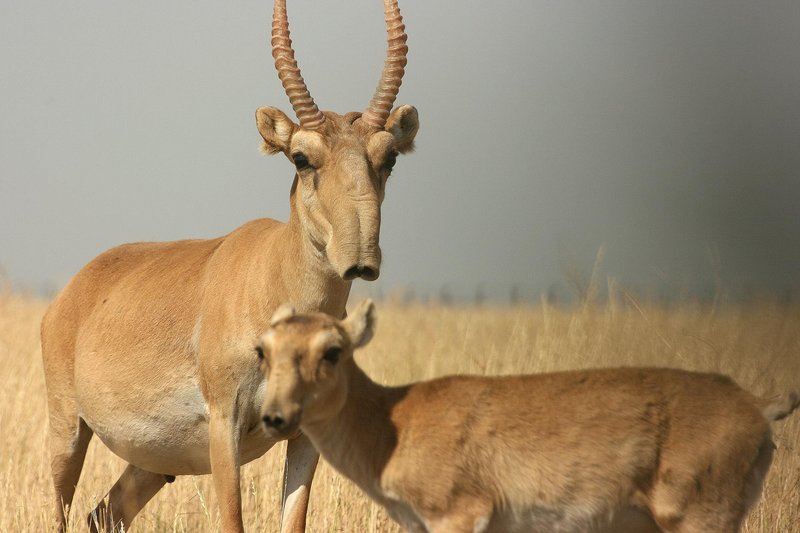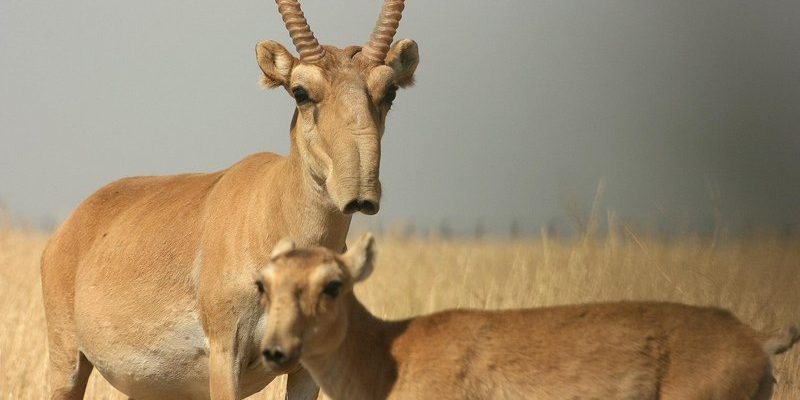
Imagine the Saiga antelope as the underdog of the animal kingdom. It thrives in harsh climates where few can survive, and despite its resilient nature, it’s facing some serious threats that could push it closer to extinction. In this article, we’ll explore the current status of the Saiga antelope, the issues contributing to its decline, and the efforts being made to save this incredible species. It’s a story of survival, perseverance, and hope.
The Current Status of the Saiga Antelope
The Saiga antelope, known scientifically as *Saiga tatarica*, is currently classified as critically endangered. This status is alarming, and it’s a wake-up call for conservationists and animal lovers alike. Once roaming the plains in large numbers, their population has drastically decreased by over 95% since the 1990s.
What caused this drastic decline? One major factor is poaching. Saiga horns are highly valued in traditional Chinese medicine, leading to illegal hunting. Additionally, habitat loss due to agriculture and climate change has compounded the problem. With fewer places to live and increasing human conflict, the Saiga’s future hangs in the balance.
Understanding the Saiga Antelope’s Unique Characteristics
To appreciate the Saiga antelope, we should first understand what makes it unique. With its oversized, flexible nose, the Saiga is perfectly adapted to its environment. The nose filters out dust kicked up by the wind and helps regulate the temperature of the air the antelope breathes.
These adaptations aren’t just quirky traits; they’re vital for survival in the harsh landscapes they inhabit. Saiga are social creatures, often seen in herds. This behavior not only provides protection from predators but also highlights the importance of community in their survival. Every member of the herd plays a role.
The Main Threats Facing Saiga Antelopes
Here’s the thing: the Saiga antelope faces multiple threats that are interlinked.
1. Poaching: As mentioned earlier, poaching for their horns is a significant problem. The demand for Saiga horns skyrockets during certain periods, prompting illegal hunts.
2. Habitat Loss: As human populations grow, land that was once home to Saiga antelopes is now used for farming and urban development. The alteration of their habitat diminishes their chances of finding food and shelter.
3. Climate Change: Changing climates affect vegetation patterns and water sources, making it harder for Saiga to survive. Droughts or severe weather events can wipe out entire herds.
All these factors intertwine to create a dire situation for the Saiga antelope. Each threat magnifies the others, making it a complex puzzle for conservationists to solve.
Conservation Efforts and Initiatives
Numerous organizations and governments are stepping up to protect the Saiga antelope. Let me explain some of the key efforts underway:
– Protected Areas: Establishing nature reserves helps shield Saiga populations from poachers and habitat destruction. Countries like Kazakhstan and Mongolia have set up protected areas to create safe havens for these animals.
– Community Involvement: It’s essential to engage local communities in conservation efforts. By educating residents about the importance of the Saiga and providing alternative livelihoods, conservationists hope to reduce poaching and habitat encroachment.
– Scientific Research: Ongoing research helps track Saiga populations and understand their behaviors. This data is crucial for developing effective conservation strategies.
These combined efforts show that while the situation is serious, there’s hope. With the right actions, the Saiga antelope can bounce back.
Why Saving the Saiga Antelope Matters
You might be wondering why we should care about a little antelope in a faraway land. The truth is, saving the Saiga has wider implications.
1. Biodiversity: Every species plays a role in its ecosystem. The Saiga helps maintain the balance of vegetation on the grasslands. Losing them can lead to overgrowth of certain plants, affecting other species.
2. Cultural Significance: The Saiga antelope is more than just a cute animal; it’s part of the cultural heritage of Central Asia. Many local communities have deep-rooted connections to these creatures.
3. Environmental Health: Protecting the Saiga also means protecting the land they inhabit. Healthy ecosystems contribute to cleaner air and water, benefiting us all.
By focusing on the Saiga, we’re also investing in a healthier planet.
How You Can Get Involved
You don’t need to be a scientist to make a difference. There are simple ways you can help support Saiga conservation:
- Support Conservation Organizations: Donating to groups dedicated to wildlife protection can make a big difference.
- Spread Awareness: Talking about the Saiga and its plight helps bring attention to its challenges. Share articles, post on social media, or discuss during your next coffee catch-up.
- Responsible Tourism: If you travel to areas where Saiga live, choose eco-friendly tours that support conservation efforts.
Every small action counts. By banding together, we can create a ripple effect that helps these animals thrive once again.
The Future of the Saiga Antelope
The future of the Saiga antelope hangs in the balance, but there’s reason to be hopeful. Conservation efforts are gaining momentum, and awareness of their plight is increasing. With persistent efforts from both local people and global communities, there may still be a chance for this remarkable species to recover.
As more people recognize the beauty and importance of the Saiga, let’s hope it inspires action. After all, preserving one species is about more than just saving them; it’s about safeguarding our shared environment for generations to come.
In conclusion, the plight of the Saiga antelope is a poignant reminder of our role in the natural world. Let’s keep the conversation going and encourage others to get involved. Together, we can help ensure that future generations will get to see these fascinating creatures thriving in their natural habitat.

